

Do You Know the Graphite Ore Processing Technology?
2019-07-08 16:29:29xinhai
The types of graphite deposits can be divided into flake graphite and aphanitic graphite. The composition, properties and distribution of graphite ores are different, so the graphite processing technologies are various.
Graphite is one of the crystalline minerals of carbon. It has excellent properties such as lubricity, stability, high temperature resistance and electrical conductivity. With the rise of new energy and new materials industries, graphite has become more and more widely used as an important non-metal.
The properties and uses of graphite depend on its crystal morphology. There are roughly three types of natural graphite:block graphite, flake graphite and aphanitic graphite.The crystalline morphology and grade of these three types of graphite are different, and their beneficiation processes are also different. Block graphite is of high grade,generally up to 60%~65%, or even up to 80%~98%, which is little need for mineral processing. The flake graphite and aphanitic graphite have relatively low relative grade and need to be processed by beneficiation.
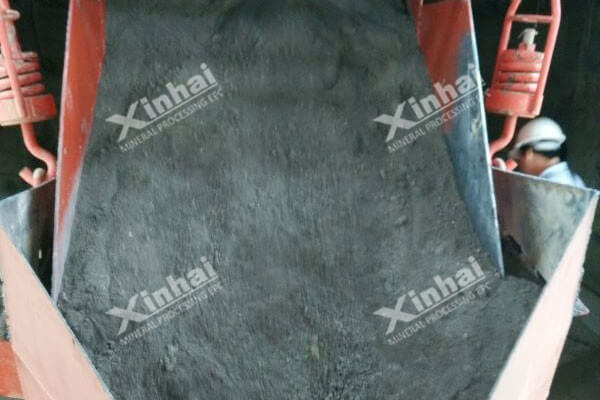
The main component of graphite is carbon. Natural graphite usually has 10% to 20% impurities, and there is few pure graphite. The impurities include silicon dioxide, alumina, magnesium oxide, calcium oxide, phosphorus pentoxide, copper oxide, vanadium oxide, hydrogen oxide, sulfur, ferrous oxide, hydrogen, nitrogen, carbon dioxide, methane, ammonia, etc. Graphite minerals are usually iron-black and steel-gray with metallic luster, while aphanitic graphite is dim and opaque.
Graphite is chemically stable, which is free from acid, alkali, and organic solvents. It has high temperature resistance, electrical conductivity, thermal conductivity, and good lubricity and plasticity.
Graphite reserves in Brazil, China, India and Mexico account for 92.77% of the world's total reserves. China's basic graphite reserves account for about 33% of the world's total, second only to Brazil (about 38% of the world). Brazil's graphite ore reserves are 58 million tons, India 11 million tons of graphite and Mexico 3.1 million tons of graphite.
(1) Graphite is disseminated and scaled in volcanic rocks and siliceous sedimentary rocks. Such deposits have large graphite scales and high ore quality, and there are famous Madagascar scaly crystalline graphite deposits.
(2) Graphite-bearing ores are vein-filled in fractures and caves. The grade of graphite in these deposits is high, and the typical deposit is vein-like graphite in Sri Lanka.
(3) Hydrothermal metasomatic contact metamorphic deposits are formed by the intrusion of intermediate-acid and acid granites into marble. Such ore deposits have good ore quality and are distributed in countries such as Russia, North Korea and other countries.
(4) The graphite in the ore of metamorphic graphite deposits in coal or carbon-rich sediments is mostly cryptocrystalline. Most of the graphite deposits in Mexico, India and Australia belong to this type.
Flake graphite grade is relatively low, generally in 2%~3% or 10%~25%. It has special atomic structure and layered structure, and it can maintain good hydrophobicity and floatability after being broken up. In the selection of flotation agents,simple agents can meet the separation requirements, such as kerosene, no. 2 terpenol oil and lime.
It is necessary to protect the flake structure of flake graphite in mineral processing. Multi-stage grinding and multi-stage separation is used to separate the large flake graphite in time. In order to protect large scales and obtain high grade concentrate, the traditional separation process will carry on 3~5 stage grinding and 5~12 times selecting. However, the traditional process is complex, with high energy consumption, unstable production and large investment, and the effect on the protection of large scales is not very good.
The new separation process adopted at present generally includes raw ore coarse crushing - fine crushing - coarse grinding - flotation - regrinding - dehydration - drying - grading, which reduces the number of regrinding and separation. The new separation process adopts vertical stirring mill orvibration mill as the regrinding equipment of flake graphite.
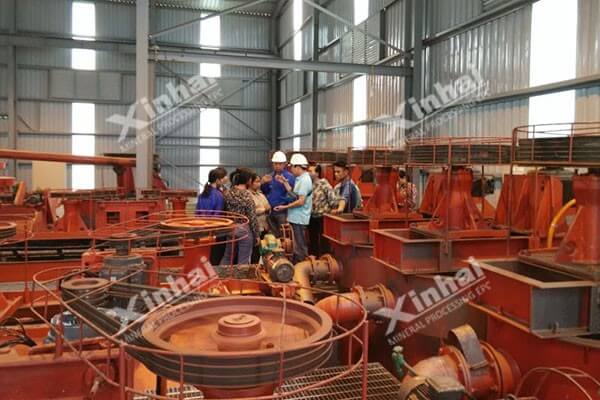
Flake graphite has a special structure, the larger the scale, the higher the carbon content,the greater the use value. Therefore, in the process of graphite grinding separation, it is necessary to protect the large scale of graphite from being destroyed.
The traditional method of protecting large-scale graphite ore is multi-stage grinding for early recovering, but this method can greatly damage the large-scale graphite ore in the actual production.
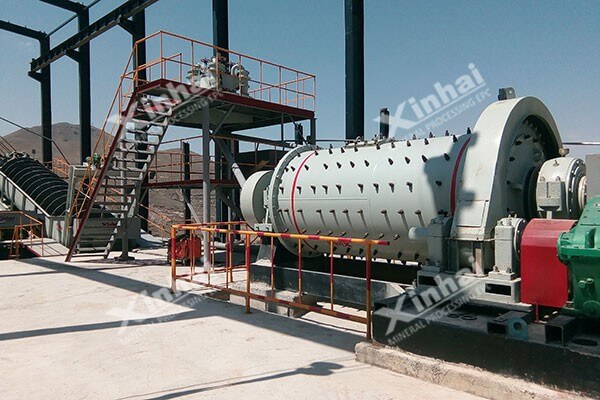
Different grinding medium has different mode of contacting minerals, so their grinding efficiency has different protection effect on graphite ore. The steel ball, steel rod and steel column have their own advantages, among which the steel rod plays an important role in protecting the large-scale graphite ore, but the grinding efficiency is not high. When the steel rod works on the grinding mill, the steel rod contacts the mineral as surface-to-surface contact, so the coarse mineral can be grounded firstly, and the large-scale graphite ore is protected. In the actual production, increasing the mill speed appropriately can solve the problem of low grinding efficiency.
In addition, using the vertical agitating mill can effectively protect the large scale of graphite ore, and improve the concentrate grade.
Aphanitic graphite ore is also known as amorphous graphite or amorphous graphite, the diameter of the crystal is less than one micron, the surface is earthy and lack of luster. Besides, its grade is relatively high, which can reach 60%-85%, even more than 90%. Generally speaking, the aphanitic graphite ore whose grade is more than 85% can be used directly, and packaged after simple crushing - drying - grinding - classifying process.
Microcrystalline ink can be separated by flotation, electrical separation and gravity separation. Cryptocrystalline graphite crystals are small, and graphite particles are often embedded in clay, which is difficult to separate, resulting in difficult separation.
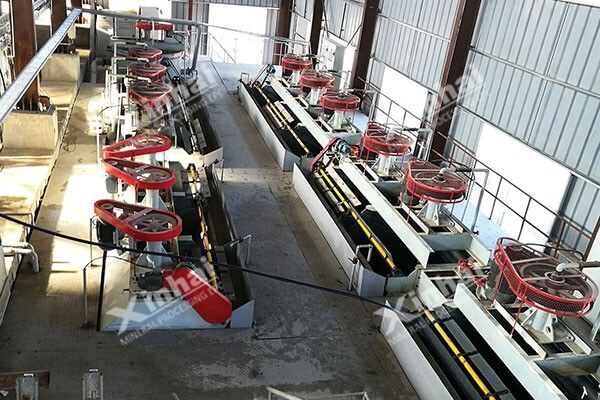
Grinding fineness has a great influence on the flotation of cryptocrystalline graphite, which needs to be separated by multi-stage grinding, and then flotation separation. The requirement of grinding fineness is different for different areas of cryptocrystalline graphite ore.
Agents often used in flotation separation of cryptic graphite minerals include kerosene, sodium carbonate, sodium silicate, etc. In addition to the effect of the amount of collector on the graphite recovery, the pH value of mineral slurry and the amount of sodiumsilicate are also the factors that can affect the graphite recovery. The pulp pH value will affect the selectivity of kerosene, flotation can not achieve a good effect when the pH value is neutral, and a good recovery can be achieved when the pH value is about 9. Because microcrystalline ink is often embedded in clay minerals, grinding is easy to produce more slime, the addition of sodium silicate can disperse slime, inhibit quartz and other silicate minerals, so that the concentrate grade is improved. Therefore, it is necessary to establish a standard reagent system through experiments in the separation of cryptocrystalline graphite. The separation stage of microcrystalline ink with multi - stage separation, can achieve a relatively high recovery.
Vietnam 800t/d graphite mineral processing project
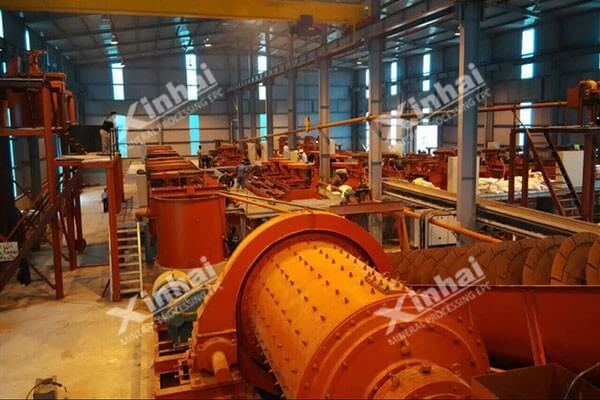
Solution:
It adopts the process of"coarse grinding and removal of the tail, multi-stage grinding and separation, and concentrated return of the middle ore", two sections of a closed-circuit crushing process, a section of closed-circuit grinding classification process, and a coarse two-sweep, ten times of fine flotation process.
Result:
The yield was 14.20%, the fixed carbon content was 92.30%, and the recovery rate was 87.91%. The final recovery rate was 92%.
Equipment:
Jaw crusher, circular vibrating screen, high- spiral classifier, wet cylinder ball mill, high-efficiency agitation tank, SF flotation cell, JJF flotation cell, agent agitation tank